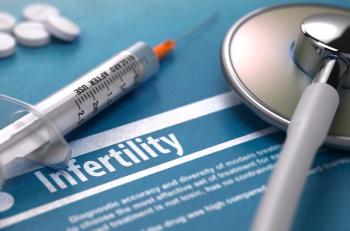
How to communicate risk to patients
Jeffrey K. Pearson, DO, keeps it simple when discussing risk with his patients.
Key Points
Jeffrey K. Pearson, DO, keeps it simple when discussing risk with his patients.
"I use a lot of analogies," says the family physician in San Marcos, California. "I will liken things to crossing the street, which can be dangerous, but you can take steps to make it less dangerous, like looking both ways.
"I think they need to understand it on a personal level and a practical level. Numbers, I think, are kind of lost on them," he says.
Unfortunately, even with your best efforts and intentions, a chance exists that patients will misunderstand or dismiss what you tell them. Only by understanding the difficulties you and your patients face in communicating and comprehending risk can you get better at it.
To improve risk communication, ask yourself whether you're explaining risk in absolute or relative terms.
What's the difference? Let's say that a new drug reduces the odds of death from cancer from 20 in 1,000 people to 10 in 1,000. Expressing the difference in absolute terms, the risk goes from 2 percent to 1 percent, a change of 1 percent.
A relative risk expression of this same information would be that the risk of death from cancer has decreased by 50 percent (a drop from 2 percent to 1 percent is, in fact, a 50 percent drop). The relative figure, although technically accurate, makes the decrease in risk of death from cancer seem much more impressive than it really is.
Express risk in absolute terms to give patients the most complete picture.
BARRIERS TO UNDERSTANDING
Communicating risk accurately can be difficult, particularly when patients' emotions enter the equation, as John Paling, PhD, discusses in his book, "Helping Patients Understand Risks." Emotions play a critical role in patients' decisions regarding their care, regardless of their level of education, Paling writes.
Unfortunately, these emotions can lead patients to fixate on the "wrong" risks; people fear unfamiliar risks, although familiar ones actually may pose a greater danger, as written by Paling and David Ropeik and George Gray, authors of "Risk: A Practical Guide for Deciding What's Really Safe and What's Really Dangerous in the World Around You." (Think of the misplaced fears one may have regarding genetically modified foods compared with the bona fide risk of consuming junk food.)
"Patients often worry about everything - both the things they can and cannot control," says Robert Duhaney, MD, a general internist in Dallas.
The source of risk information and how much the patient trusts that source are crucial. A British study published in the compilation, "Risk Communication and Public Health," found that the two most trusted sources of risk information are friends and family.
Paling also points out that the glut of information available from the Internet and other sources can create doubt in the mind of a patient that you really have all the facts about a particular risk. It also can cause a patient to have an exaggerated perception of the risks or benefits of a medication or procedure.
The education level of a patient is another factor. More than 20 percent of Americans are considered at or below the lowest level of literacy and numeracy, according to a 1998 report from the National Institute for Literacy.
Daniel Reimer, MD, a diagnostic radiologist in Mobile, Alabama, says that including a family member or friend of the patient when explaining a test or procedure can increase the odds of comprehension, and Pearson says he tries to speak to his patients at approximately a "grade school level."
Newsletter
Stay informed and empowered with Medical Economics enewsletter, delivering expert insights, financial strategies, practice management tips and technology trends — tailored for today’s physicians.














